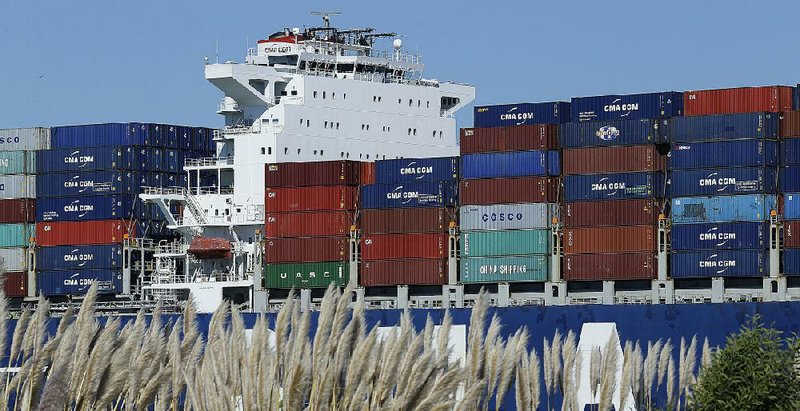WASHINGTON -- Rising exports and falling imports in August shrank the U.S. trade deficit in goods and services to the lowest level in nearly a year, data released Thursday morning by the Commerce Department showed.
The trade deficit -- which measures the gap between what the United States imports and what it exports -- narrowed to $42.4 billion in August, down $1.2 billion from July. Exports in the month were $195.3 billion, while imports came to $237.7 billion.
The overall trade deficit is still growing on an annual basis -- it was up 8.8 percent in the first eight months from the same period in 2016.
The trade deficit is closely watched and routinely cited by President Donald Trump, who often points to the gap as evidence that global trade is not benefiting the United States in the way that it should. He has promised that his America-first trade policy will help to shrink the trade deficit, consistently citing deficits that form between two countries as a sign that the United States is losing when it comes to global trade. And he has typically blamed trade agreements and negotiators who failed to secure the best terms for U.S. exporters.
The administration has commissioned a comprehensive report on the state of significant trade deficits, which has not yet been released to the public.
Economists caution against reading too much into the trade deficit, particularly monthly swings, as a measure of the administration's success in extending the United States' prowess in global trade. That's because the trade deficit is more closely linked with multiple macroeconomic factors, such as the relative growth rates of countries, the value of currencies, the strength of the U.S. dollar as a global reserve currency, and global trends in savings and investment.
A better measure of success for Trump's America-first policy, economists say, would be putting more Americans to work, and growth and productivity gains overall.
The White House and the Commerce Department did not immediately respond to requests for comment.
Many economists do not see the trade gap as a negative. Bryan Riley, an economist at the Heritage Foundation who advocates free trade, said the trade deficit is not necessarily a sign of trouble. It can be good or bad, depending on the circumstances. Riley points out that in recent years, the economy has grown faster at times when the trade deficit was getting bigger, and slower at times when it was getting smaller.
Riley said the administration's tax policies may actually have greater impact on the trade deficit than trade policy if changes to the tax code end up making the U.S. economy more competitive and attract more investment.
While the Trump administration would consider such tax changes to be a success, Riley said they might make the U.S. trade deficit even bigger -- if, for example, lower taxes expand economic growth, which gives Americans more money to buy goods from abroad, or incentivizes foreigners to invest more in the United States.
Not every economist thinks that a trade deficit is harmless. Some, especially those on the left, see persistent imbalances as a potentially troubling sign that the United States has lost manufacturing jobs to other countries.
Jared Bernstein, a senior fellow at Center on Budget and Policy Priorities and a former economic adviser to former Vice President Joe Biden, said that while the president should not look to trade deficits as a "scorecard" from month to month, Trump "was onto something" with his intuition that persistent trade deficits reflected a structural problem of fewer goods being produced in the United States and fewer manufacturing jobs.
But Bernstein agrees it will be difficult for the president's actions to have much influence on trade flows, which are determined by bigger economic factors. He predicted that the country's trade balance would probably be pretty similar when Trump leaves office as when the president came in. As powerful as the president and economic policy can be, they pale in comparison to millions of American consumers and producers -- and the multinational supply chains that have long existed to serve those needs.
"Cargo ships aren't going to disappear because of saber rattling," Bernstein said. "You actually have to implement pretty drastic policies to disrupt these flows, which are embedded in the global economy. The things you've heard them talking about are pretty marginal."
That seems unlikely to dissuade Trump from citing the metric. On Monday, Trump told Gen. Prayuth Chan-ocha, the prime minister of Thailand, that he wanted to reduce the U.S. trade deficit with that country. "I think we're going to try and sell a little bit more to you now," the president said.
Business on 10/06/2017

